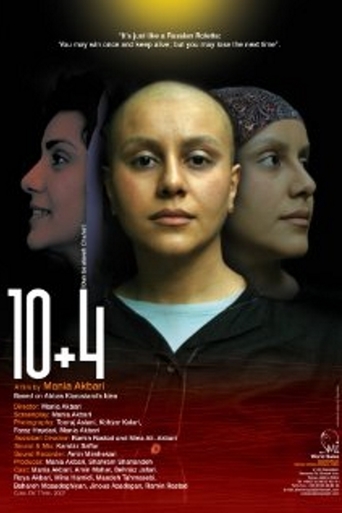



Plot so thin, it passes unnoticed.
Close shines in drama with strong language, adult themes.
View MoreThe best films of this genre always show a path and provide a takeaway for being a better person.
View MoreActress is magnificent and exudes a hypnotic screen presence in this affecting drama.
View MoreDah Be Alaveh Chahar - (AKA 10 + 4, 2007) - represents a sequel to Abbas Kiarostami's 2002 art-house hit 10. This outing, however, is directed not by Kiarostami but by his lead actress from the earlier film, Mania Akbari, essaying both her second directorial credit and the lead role in this picture. As in the first installment, Akbari spends her screen time as an unnamed character, driving a car and conducting long conversations with passengers - including her son, her sister and others. Yet here, she's suffering from a terminal cancer that is slowly worming its way through her body. When it renders her completely incapacitated as a driver, she moves to the backseat and conducts her conversations from that locale. In fact, the cancer in time becomes so advanced that it begins to direct the woman's movements, actions and film making; throughout the picture, the film's point of view never takes its gaze off of the female subject. ~By:Nathan Southern, Rovi
View More